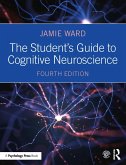Part I Microscopic Cognitive Neurodynamics. 1. Dynamic Interaction Networks and Global Ontology-Based Modelling of Brain Dynamics, Nikola Kasabov et. al.; 2. The Cauchy Problem for Spiking Neuron Models, Romain Brette. 3. On the Dynamics of Spectro-Temporal Tuning in Auditory Cortex, Didier A. Depireux et. al.; 4. A European Collaboration on Cerebellar LTD and Pattern Recognition, Erik De Schutter et. al.; 5. The Role of Layer 6 Feedback Cells in the Primary Visual Cortex, Wei Wang. 6. What Language is Spoken Here? Conversations Between Neurons in Primate Visual Cortex, Vivien A. Casagrande et. al.; 7. On the Emergence of Orientation Biases in V1, Mehdil and Nouri Shirazi. 8. Stress Affects Synaptic Plasticity and Basal Synaptic Transmission in the Rat Hippocampus In Vivo, Amer Kamal et. al.; 9. Physiological Evidence for Cantor Coding Output in Hippocampal CA1, Yasuhiro Fukushima et. al.; 10. Theta Phase Coding and Suppression of Irrelevant Plastic Change Through STDP in the Entorhino-Hippocampal System amid Background Noise, Jun Igarashi et. al.; 11. Effect of Low-Frequency Stimulation on Spontaneous Firing in Cultured Neuronal Networks, J. van Pelt et. al.; 12. Modeling Neurons of the Inferior Colliculus, Harry Erwin et. al.; 13. Synchronization Effects in Networks of Striatal Fast Spiking Interneurons - Role of Gap Junctions, Johannes Hjorth et. al.; 14. Multilayer In-Place Learning Networks with Adaptive Lateral Connections: Models and Simulations, Weiya Shi et. al.; 15. Stimulus-Induced Pairwise Interaction Can Be Revealed by Information Geometric Approach, Hiroyuki Nakahara et. al.; 16. A Dynamical Model of Fast Intrinsic Optical Signal of Neural Burstings, Jianzhong Su et. al.; 17. The Mechanism of Bifurcation-Dependent Coherence Resonance of Morris-Lecar Neuron Model, Guangjun Zhang et. al.; 18. Noise-Induced Coherence Resonance in Morris-Lecar Neuron System, Bao-Hua et. al.; 19. Chaotic Burst Synchronization in a Small-World Neuronal Network, YanhongZheng et. al.; 20. A Stochastic Resonance Memory Mechanism of Hippocampus, Yan Chuankui et. al.; 21. Theta Phase Precession Enhance Single Trial Learning in an STDP Network, Enhua Shen et. al.; 22. A Numerical Mechanism for Square-Wave or Elliptic Bursting of Bursts in a Map-Based Neuron Network, Hongjun Cao et. al.; 23. Sub-Threshold Oscillation and Transient Response in Neural Coding, Jianxue Xu. 24. Setting Up New Memories: The Ideal Job for The Mammalian Dentate Gyrus; Gergely Papp and Alessandro Treves. 25. Neural Network Model Generating Symbol Sequence for Songs of Bengalese Finch, Junichirou Kotani et. al.; 26. A New Method for Characterizing the Variability of the Spike Trains, Ying Du et. al.; Part II Mesoscopic Cognitive Neurodynamics; Transitions Between Levels. 27. Proposed Renormalization Group Analysis of Nonlinear Brain Dynamics at Criticality, Walter J. Freeman et. al.; 28. Regulating Cortical Neurodynamics at Different Scales, Hans Liljenstrom. 29 A Thermodynamic Model of the Action-Perception Cycle in Brain Dynamics, Walter J. Freeman. 30. Dynamic Field Theory as the Interface Between Neuronal Dynamcis and Embodied Cognition, Gregor Schoner. 31. The Task of Cognitive Neuroscience; Christoph von der Malsburg. 32. Functional Roles of Feedback Signals from Higher-Order Areas to Lower-Order Areas in the Visual Cortical Pathways, Tiande Shou. 33. Dynamics of Population Decoding with Strong Inhibition, Thomas Trappenberg. 34. Global Oscillations of CA3 Neural Fields; Francesco Ventriglia. 35. Behaviour Signatures of Continuous Attractors, Si Wu. 36. Statistical Outliers in Neuron Population and Myelinated Fiber Development in Human Neocortex, David L. Cooper et. al.; 37. Studies on Synchronization Using KIV Model, Mark H. Myers et. al.; 38. Synchronous Firing and Its Control in Neuronal Population with Time Delay, Xianfa Jiao et. al.; 39. Sequence Memory with Dynamic Synapses and Chaotic Neurons, Min Xia et. al.; 40. Interacting Turing and Hopf Instabilities Drive Pattern Formation in a Noise-Driven Model Cortex, Moira L. Steyn-Ross et. al.; 41. Context-Dependent Processing of Spatiotemporal Patterns Based on Interaction Between Neurodynamical Systems, Takashi Hasuo et. al.; 42. The Synchronization and Associative Memory of Izhikevich Neural Network, Wei Zhang et. al.; 43. Connectivity Dependent Effects in Cognitive Neurodynamics of Mental Disorders, Hans Liljenstrom et. al.; 44. Corticopetal Acetylcholine: A Role in Attentional State Transitions and the Genesis of Quasi-Attractors During Perception, Hiroshi Fujii et. al.; 45. Cortical Anatomy and the Spatiotemporal Learning Rule, J.J. Wright et. al.; 46. Theta Phase Precession for Spatial Representation in the Entorhinal-dentate Gyrus-ca3 Network, Colin Molter et. al.; 47. Optical Imaging of Visual Feature Representation in the Awake, Fixating Monkey, Anna Roe et. al.; 48. Mechanisms of Spatial Integration in Primary Visual Cortex of the Primate, Alexander Thiele et. al.; 49. Coding of Peripheral Olfactory Information in the Olfactory Bulb of Small Animals, Fuqiang Xu et. al.; 50. Neural Ensembles and Local Field Potentials in the Hippocampal-Prefrontal Cortex System During Spatial Learning and Strategy Shifts in Rats, Francesco P. Battaglia et. al.; 51. Temporal and Spatial Characters of Retinal Ganglion Cells'Response to Natural Stimuli, Ying-Ying Zhang et. al.; 52. Synchronization of Chaotic Neuronal Networks with Small-world. Topology, Fang Han et. al.; 53. Effects of Time Delay on Synchronization and Temporal Order in a Square Lattice Noisy Neuronal Network, Qing-Yun Wang et. al.; 54. The Attractor Type of Complex Networks, Tan Ning et. al.; 55. Asymptotical Stability of Delayed BAM Neural Networks with Generalized Activation Functions by Comparison Approaches; Yuguo Chen et. al.; 56. Chaotic Synchronization of Hindmarsh-Rose Neurons Coupled by Cubic Nonlinear Feedback, Xiaoling Fang et. al.; Part III Macroscopic Cognitive Neurodynamics. 57. When IsItWorthWorking: Calculating the Motivational Value of Working, Barry J. Richmond et. al.; 58. The Physiological and Biochemical Bases of Functional Brain Imaging, Louis Sokoloff. 59. Through Attention to Consciousness; J.G. Taylor. 60. What Do Infants Infer? - Modelling Simple Cognition; J.G. Taylor et. al.; 61. The Time Dimension for Scene Analysis; DeLiang Wang. 62. Implications for Psychiatry of a Thermodynamic Model of Brain Operating Far from Equilibrium, Walter J. Freeman. 63. Optical Imaging of Plastic Changes Induced by Fear Conditioning in The Auditory Cortex of Guinea Pig, Yoshinori Ide et. al.; 64. Learning in Sparse Attractor Networks with Inhibition, Si Wu et. al.; 65. Dynamic Analysis of Motor Imagery EEG Using Kurtosis Based. Independent Component Analysis, Xiaojing Guo et. al.; 66. Quantifying the Sequential Structure of Psychotic Behavior; P.E. Rapp. 67. Machine Learning Framework for Inferring Cognitive State from Magnetoencephalographic (MEG) Signals, Andrey Zhdanov et. al.; 68. Relevant Stimuli Encoding Surface Structural Textures by Touching Plain Woven Fabric, Jiyong Hu et. al.; 69. Robust Auditory-Based Speech Feature Extraction Using Independent Subspace Method, Qiang Wu et. al.; 70. Intra- and Interpersonal Coordination of Goal-Oriented Movements in aWorking Scenario, Cordula Vesper et. al.; 71. Network Synchronization/Desynchronization Defects in the Pathogenesis of Neuropsychiatric Disorders, R.S. Hernandez et. al.; 72. Exploring Causal Relationships in the Phase Functions of Coupled Van der Pol Oscillators; C.J. Cellucci et. al.; 73. EEG Theta Regulates Eye Saccade Generation During Human Object-place Memory Encoding, Naoyuki Sato et. al.; 74. Hippocampal and Parahippocampal Neuronal Responses to Spatial and Non-Spatial Factors in Rats and Monkeys, Hisao Nishijo et. al.; 75. Oscillatory Event Synchrony During Steady State Visual Evoked Potentials, Francois B. Vialatte et. al.; 76. Information Entropy-Based Penalty for PARAFAC Analysisof Resting EEG, Eduardo Martynez-Montes et. al.; 77. PARAFAC Analysis of Neural Correlates of Face Detection, Jhoanna Perez-Hidalgo-Gato et. al.; 78. Human Vision Can Predict Semi-Random but the First-Order Linear Process, Manabu Shikauchi et. al.; 79. Memory Formation of Object Representation: Natural Scenes, Eiichi Hoshino et. al.; 80. Dynamical Model of Action Reinforcement by Gated Working Memory; Adam Ponzi. 81. Quantum Representation Theory for Nonlinear Dynamical Automata, Peter beim Graben. 82. Superior Colliculus and Basal Ganglia Control the Saccadic Response in Motion Discrimination Tasks, Jiaxiang Zhang et. al.; 83. A Synergetic Model for Operant Behaviors Under the Control of Fixed Interval Reinforcement Schedules, Shih-Che Lin and Jay-Shake Li. 84. Adaptable Intermittency and Autonomous Transitions in Epilepsy and Cognition, Elan Liss Ohayon et. al.; 85. A Computational Approach to the Control of Voluntary Saccadic Eye Movements, Jeremy Fix. 86. Spatial Considerations of Feedback Control for the Suppression of Epileptic Seizures, Beth A. Lopour et. al.; 87. EEG Scaling Difference Between Eyes-Closed and Eyes-Open Conditions by Detrended Fluctuation Analysis, Tingting Gao et. al.; 88. Closure Positive Shifts Evoked by Different Prosodic Boundaries in Chinese Sentences, Weijun Li et. al.; 89. Structure-Function Relationship in Complex Brain Networks by Multilevel Modeling, Changsong Zhou et. al.; 90. Model of Attention Allocation for Car Driver by Driving Plan and Prediction of Environment Change, Takashi Omori. 91 Top-Down Object Biased Attention Using Growing Fuzzy Topology ART, Young-Min Jang. 92. Saliency Map Models for Stimulus-Driven Mechanisms in Visual Search: Neural and Functional Accounts, Jun Saiki et. al.; 93. Extraction of Single-Trail N400 Event-Related Potentials Based on Dynamic Independent Component Analysis, Wen-Juan Li et. al.; 94. Characterizing Individual Interest by a Computational Model of Reading, J. Ignacio Serrano et. al.;95. Overview of Diffusion Tensor Imaging in Multiple Sclerosis and Neuromyelitis Optica, Chunshui Yu et. al.; 96. 1H MRS Characterization of Cerebral Metabolic Changes in Transgenic Mouse Models of Alzheimer's Disease, Xiaoxia Du et. al.; 97. WLC Analysis of Lamprey Neural System, Liu Shenquan et. al.; 98. Hydrocephalus: A Realistic Porous-Media Model with Geometry Based on Neuroimaging, Guillermo Narsilio et. al.; 99. Pattern Classification of Visual Evoked Potentials Based on Parallel Factor Analysis, Jie Li et. al.; 100. How Can We Justify the Use of Lower Animal Models to Understand the Pathophysiology of Schizophrenia? Anne-Laure Boutillier et. al.; 101. Monkey Prefrontal Neuronal Activity Modifications after Training in a Cognitive Task, Xue-Lian Qi et. al.; 102. Neural Substrates During Finding Target Objects and Observing Natural Phenomena: An fMRI Study, Jun-Ki Lee et. al.; 103. Changes in Brain Activation Induced by Training of Hypothesis Generation Skills: An fMRI Study, Yong-Ju Kwon et. al.; 104. Early Access and Integration of Meaning Indicated by Pitch Accent: A Mismatch Negativity Study, Xiaoqing Li et. al.; 105. Electric Stimulation of Optic Nerve Fiber: A Simulation Study, Qingli Qiao et. al.; 106. EEG Dynamics During Nitrous Oxide Inhalation in Healthy Male Participants, Brett L. Foster et. al.; 107. Penalized Regression Methods in the Source Analysis of Face Recognition, Mayrim Vega-Hernandez et. al.; 108. Brain Activation During Scientific Hypothesis Generation in Biologists and Non-biologists, Il-Sun Lee et. al.; 109. Wavelet Analysis of ERP Recordings for Dual Tasks in Man, Jie Wu et. al.; 110. Neocortical and Neocerebellar Synchronization of Fast Oscillations: Role in the Dynamic Organization of Rapid Temporal Processing, John P. Welsh et. al.; Part IV Applications 111 A Road-Map Towards Cognitive Machines, J.G. Taylor. 112. Comprehensive EEG Signal Analysis for Brain-Computer Interface, Shangkai Gao et. al.; 113. Unsupervised Extractionand Supervised Selection of Features Based on Information Gain, Soo-Young Lee et. al.; 114. Stability and Instability in Autonomous Systems, Hans Liljenstrom. 115. The Neuroinformatics Portal of the International Neuroinformatics Coordinating Facility, Jan G. Bjaalie. 116. Neuroinformatics in the Netherlands, Jaap van Pelt et. al.; 117. Neuroinformatics Japan Node and Platforms, Shiro Usui. 118. Chinese Neuroinformatics Research: Recent Progress and Future Activities, Guang Li et. al.; 119. Neuroinformatics in India - Current Status and Future Directions, Nandini Chatterjee Singh. 120. Emotional States Estimation from Multichannel EEG Maps, Tomasz M. Rutkowski et. al.; 121. ICA and Complexity Measures of EEG Analysis in Brain Death Determination, Jianting Cao et. al.; 122. Feature Reduction in Biosignal Processing, Martin Golz et. al.; 123. An Efficient Encoding Scheme for Dynamic Visual Input Based on the Statistics of Natural Optic Flow, Dirk Calow et. al.; 124. Grid Task Scheduling Algorithm R3Q for Evolving Artificial Neural Networks, Yoshiyuki Matsumura et. al.; 125. Pattern Discrimination of Mechanomyogram Using a Delta-Sigma Modulated Probabilistic Neural Network, Keisuke Shima et. al.; 126. HMM-Based Top-Down Attention for Noise-Robust Speech Recognition, Chang-Hoon Lee et. al.; 127. Roving Robot Autonomously Controled by Chaotic Memory Dynamics in Quasi-Layered Recurrent Neural Networks for Sensing and Driving, Tai Tanaka et. al.; 128. A New Approach to Detect Stable Phase Structure in High-Density EEG Signals, Yusely Ruiz et. al.; 129. A Tea Classification Method Based on an Olfactory System Model, Eduardo Gonzalez et. al.; 130. Evolution Architecture Models for Integrated Grid Information Services, Do-Hyeun Kim et. al.; 131. Maximizing Parallelism for Single Loops, Sam Jin Jeong. 132. The RealtimeWorkflow for RFID Based Medical Test, Sang Hwan Kung et. al.; 133. Visuo-Spatial Attention Frame Recognition for Brain-Computer Interfaces, Ferran Galan et.al.; 134. To Err is Human: Learning from Error Potentials in Brain-Computer Interfaces, Ricardo Chavarriaga et. al.; 135. Multi-Command Real-Time Brain Machine Interface Using SSVEP: Feasibility Study for Occipital and Forehead Sensor Locations, Pablo Martinez et. al.; 136. Towards Learning Retina Implants: How to Induce Visual Percepts with Electrical Stimulation Patterns, Rolf Eckmiller et. al.; 137. The Effects of Speed Steps on Brain Cognitive Processing: An ERP Study, Lin-Jie Wang et. al.; 138. Design and Implementation of the Adaptive Teachable Agent, SungHyun Yun et. al.; 139. The Convertible Undeniable Multi-Signature Scheme, SungHyun Yun et. al.; 140. A Cognitive-Neuro Computational Lexical Acquisition Model, Heui Seok Lim et. al.; 141. Brain Activation Connected with Visual Word Processing in Korean Language, Hyojeong Sohn et. al.; 142. A GJK Based Real-Time Collision Detection Algorithm for Moving Objects, Sangyoung Oh et. al.; 143. Neural Information Encoding Based on a Bifurcation Machinery, Wei Ren et. al.; 144. Identify Stochastic Bursting from Chaotic Bursting Generated in an Experimental Neural Pacemaker, Huaguang Gu et. al.; 145. Ocular Artifacts Removal from EEG Using EMD, David Looney et. al.; 146. Quasi-Brain-Death EEG Data Analysis by Empirical Mode Decomposition, Yuki Saito et. al.; 147. Synchronization Between Two Coupled Networks of Discrete-Time Systems, Congxiang Xu et. al.; 148. Walk-Aided System with Wearable Lower Extremity Exoskeleton for Brain-Machine Engineering, Heng Cao et. al.; 149. A Study on the Filter Effect for Calculating the Mass Center of the Traveling Alpha Waves, Hongchuan Xiong et. al.; 150. Differentiate Negative and Positive Schizophrenia Using Support Vector Machine, Ming Ke et. al.; 151. Detecting Nonlinearity in Wrist Pulse Using Delay Vector Variance Method, Jianjun Yan et. al.; 152. Orthogonal Filter-Based Networks for Learning, Wieslaw Sienko et. al.; 153. Modeling and Simulation of Foreign Body Reactions to Neural Implants, Jianzhong Su et. al.; 154. Transiently Chaotic Neural Network with Variable Thresholds for the Frequency Assignment Problem in Satellite Communications, Wen Liu et. al.; 155. Sparse Coding of Visual Context, Jun Miao et. al.; 156. Mark Design and Recognition in Blind-Guiding System, Jihong Liu et. al.; 157. An Animal Model of Alzheimer's Disease Highlighting Targets for Computational Modeling, Diana S. Woodruff-Pak et. al.; 158. An Improved Transiently Chaotic Neural Network Approach for Identical Parallel Machine Scheduling, Aiqing Yu et. al.; 159. Support Vector Machine on Functional MRI, Ling Zeng et. al.; Part V Methods and Technics. 160. Face Detection Using Multi-Feature, Huaiyi Zhu et. al.; 161. A Text Classification Method Based on Cascade, Hui Li et. al.; 162. A PCNN Based Approach to Image Segmentation Using Size-Adaptive Texture Features, Lijuan Duan et. al.; 163. Entropy-Partition of Complex Systems and Emergence of Human Brain's Consciousness, Guangcheng Xi. 164. Multi-Qubit State Teleportation via Multiparty-Controlled Entanglement, Ying Guo et. al.; 165. New Multiobjective PSO Algorithm for Nonlinear Constrained Programming Problems, Chun-An Liu. 166. Binary Kernel in Morphological Associative Memory, Wei-Chen Cheng et. al.; 167. Intrusion Detection Classifier Based on Dynamic SOM and Swarm Intelligence Clustering, Yong Feng et. al.; 168. New Evolutionary Algorithm to Solve Dynamic Constrained Optimization, Chun-An Liu et. al.; 169. Effects of 3D Co-Occurrence Features on Terrain Classification, Dong-Min Woo et. al.; 170. New Heuristic of Self Organizing Map Using Updating Distribution, Sung-Hae Jun. 171. Regression ICA Algorithm for Image Denoising, Shangming Yang, Zhang Yi and Guisong Liu. 172. Thumbnail Generation Based on Global Saliency, Xiaodi Hou et. al.; 173. Exponential Stability of Delayed Hopfield Neural Networks by Using Comparison Method, Wudai Liao. 174. Adaptive Fuzzy Clustering Neural Network, Fang Bao et. al.; 175.Compound Attack on Synchronization Based Neural Cryptography, Ping Li et. al.; 176. Two-Dimension Mass-Moment Control Based on the Fuzzy Neural Networks Variable Structure Control, Zhiqin Qian et. al.; 177. Constructive Approximation Method of Polynomial by Neural Networks, Jianjun Wang et. al.; 178. Fault Pattern Recognition Based on Improved Wavelet Neural Network, Deng-Chao Feng et. al.; 179. Estimation of the Flooded Volume in Ad Hoc Networks Using Evolving Networking Theory, Demin Li et. al.; 180. A Plausible Modeling for Cellular Responding DNA Damage Under Radiotherapy, Jinpeng Qi et. al.; 181. An Improvement of Sequential Minimum Optimization Algorithm, Jian Zhang et. al.; Index.





![Advances in Cognitive Neurodynamics (V) (eBook, PDF) Advances in Cognitive Neurodynamics (V) (eBook, PDF)]() Advances in Cognitive Neurodynamics (V) (eBook, PDF)233,95 €
Advances in Cognitive Neurodynamics (V) (eBook, PDF)233,95 €![The Student's Guide to Cognitive Neuroscience (eBook, PDF) The Student's Guide to Cognitive Neuroscience (eBook, PDF)]() Jamie WardThe Student's Guide to Cognitive Neuroscience (eBook, PDF)52,95 €
Jamie WardThe Student's Guide to Cognitive Neuroscience (eBook, PDF)52,95 €![Advances in Cognitive Neurodynamics (II) (eBook, PDF) Advances in Cognitive Neurodynamics (II) (eBook, PDF)]() Advances in Cognitive Neurodynamics (II) (eBook, PDF)233,95 €
Advances in Cognitive Neurodynamics (II) (eBook, PDF)233,95 €![Advances in Cognitive Neurodynamics (IV) (eBook, PDF) Advances in Cognitive Neurodynamics (IV) (eBook, PDF)]() Advances in Cognitive Neurodynamics (IV) (eBook, PDF)161,95 €
Advances in Cognitive Neurodynamics (IV) (eBook, PDF)161,95 €![The Evolving Brain (eBook, PDF) The Evolving Brain (eBook, PDF)]() C. H. VanderwolfThe Evolving Brain (eBook, PDF)73,95 €
C. H. VanderwolfThe Evolving Brain (eBook, PDF)73,95 €![Representation and Brain (eBook, PDF) Representation and Brain (eBook, PDF)]() Representation and Brain (eBook, PDF)113,95 €
Representation and Brain (eBook, PDF)113,95 €![Advances in Cognitive Neurodynamics (VI) (eBook, PDF) Advances in Cognitive Neurodynamics (VI) (eBook, PDF)]() Advances in Cognitive Neurodynamics (VI) (eBook, PDF)161,95 €
Advances in Cognitive Neurodynamics (VI) (eBook, PDF)161,95 €






